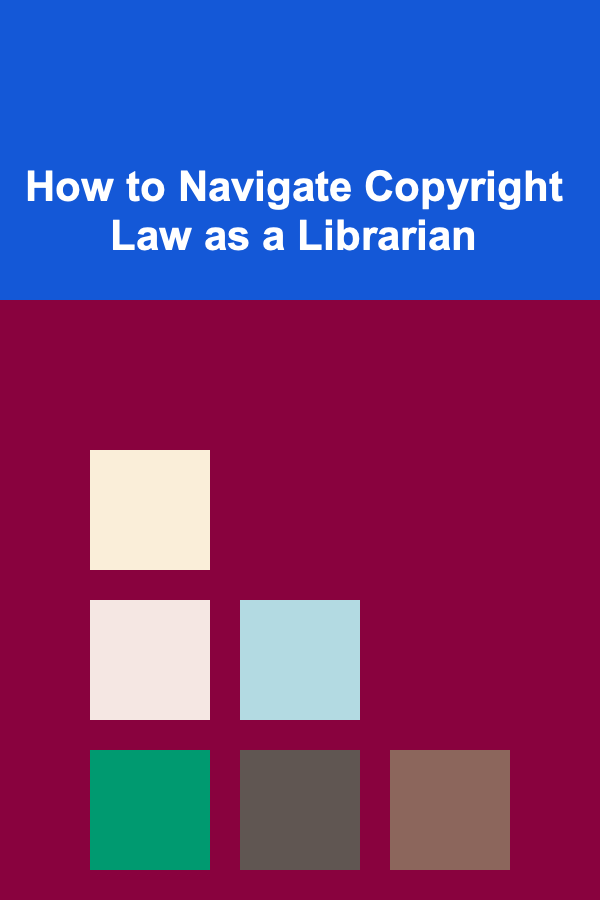
Top Ways to Monetize Your Deep Learning Skills
ebook include PDF & Audio bundle (Micro Guide)
$12.99$6.99
Limited Time Offer! Order within the next:

Deep learning, a subset of machine learning, has experienced rapid advancements over the past decade, leading to a surge in its applications across various industries. From self-driving cars and natural language processing to medical diagnostics and automated customer service, deep learning technologies are transforming the way businesses operate. With these developments comes the opportunity to turn deep learning expertise into a lucrative income stream.
In this article, we will explore the top ways to monetize your deep learning skills, providing both short-term and long-term strategies that can generate substantial income. Whether you're a researcher, developer, or enthusiast, there are various methods to profit from your deep learning knowledge. The world of artificial intelligence (AI) is vast, and the demand for deep learning solutions is growing, offering a wealth of opportunities for those with the right expertise.
Freelance Deep Learning Projects
Freelancing is one of the most direct and flexible ways to monetize your deep learning skills. Many companies and startups are in need of AI solutions but may not have in-house expertise. By offering your services as a freelance deep learning engineer, you can work on a wide range of projects that fit your skills and interests.
How to Get Started
- Create a Portfolio: Before you start offering your services, it's essential to build a strong portfolio that demonstrates your deep learning capabilities. Work on open-source projects, contribute to Kaggle competitions, or build your own AI models and showcase them on platforms like GitHub. This will give potential clients confidence in your skills.
- Join Freelance Platforms: Websites such as Upwork, Freelancer, and Toptal allow you to connect with clients seeking AI and deep learning experts. Create a compelling profile that highlights your expertise in deep learning frameworks like TensorFlow, Keras, or PyTorch. Additionally, you can use these platforms to bid on projects and start building your client base.
- Network in AI Communities: Joining AI-focused communities on platforms like LinkedIn, Reddit, or specialized AI forums can help you connect with potential clients who need deep learning services. Networking can also lead to referrals, which can be a consistent source of freelance opportunities.
Types of Freelance Projects
Freelance deep learning projects can vary widely in scope and industry. Here are some examples of what you might encounter:
- Computer Vision Projects: Implementing deep learning models for image classification, object detection, facial recognition, or autonomous driving.
- Natural Language Processing (NLP) Projects: Developing models for text analysis, sentiment analysis, chatbot creation, or language translation.
- Predictive Analytics: Building models to forecast sales, customer behavior, or market trends for businesses in finance, retail, or marketing.
- Reinforcement Learning: Applying RL to optimize decision-making processes, like in robotics, game development, or automated trading systems.
Monetization Potential
Freelance work can provide both short-term and long-term income. Project fees vary depending on the complexity and duration of the task, but experienced deep learning freelancers can charge anywhere from $50 to $200 per hour. The income potential is high, and as your reputation grows, you can raise your rates and secure more lucrative projects.
Create AI-Powered SaaS Products
Building AI-powered Software as a Service (SaaS) products is an effective way to turn your deep learning skills into a sustainable revenue stream. Once developed, SaaS products offer recurring income with minimal ongoing effort. A SaaS model allows you to leverage your deep learning knowledge to create tools that businesses or individuals can use on a subscription basis.
Identifying a Problem to Solve
The first step in creating an AI-powered SaaS product is identifying a problem that can be solved with deep learning. Successful products often address a common pain point or inefficiency. Here are a few potential ideas:
- AI-powered Content Creation Tools: Develop tools that automatically generate written content, such as blog posts, product descriptions, or social media posts. These tools can use NLP techniques to create high-quality, human-like text.
- AI-based Customer Support: Develop a chatbot or virtual assistant that can handle customer service inquiries, troubleshooting, or product recommendations. These models can be integrated into websites or e-commerce platforms to reduce customer service costs and improve user experience.
- Predictive Maintenance Software: Create a deep learning solution that helps manufacturers predict when equipment will fail, reducing downtime and maintenance costs.
- Financial Forecasting Tools: Use deep learning models to predict stock prices, cryptocurrency trends, or economic indicators. These models could be offered as SaaS platforms for investors or businesses in the finance sector.
Monetizing SaaS Products
Once your AI-powered SaaS product is up and running, you can monetize it through several methods:
- Subscription Model: Charge users a monthly or annual fee to access your platform. Offer different pricing tiers based on the features or usage limits.
- Freemium Model: Offer a free version of your product with limited functionality, and charge users for access to premium features, such as advanced analytics or higher data limits.
- Pay-per-Use: Charge users based on their usage, such as the number of API calls or the amount of data processed.
Example SaaS Platforms
- Clarifai: A computer vision platform that provides AI-powered image and video recognition services. The platform is offered as a SaaS, with different pricing tiers based on usage.
- MonkeyLearn: A natural language processing SaaS tool that helps businesses analyze text data. It allows users to build custom text classification models without needing deep learning expertise.
- BigML: A machine learning platform that enables users to build predictive models. It provides an easy-to-use interface for creating models, and it offers a SaaS pricing model.
Monetization Potential
Building a successful AI-powered SaaS product requires an initial investment of time and effort, but once it's developed, the income potential is significant. SaaS businesses often enjoy recurring revenue, which makes this model highly scalable. Depending on your pricing and customer base, you could generate anywhere from a few hundred dollars to several thousand dollars per month in passive income.
Licensing Deep Learning Models
If you have developed a particularly effective deep learning model, you can license it to businesses or developers who want to integrate it into their applications. Licensing allows you to earn passive income by giving others access to your models for a fee.
How Licensing Works
Licensing typically involves offering your deep learning models as a product that businesses can pay to use. You can choose from several licensing models:
- One-Time Licensing: Charge a one-time fee for access to your model.
- Subscription Licensing: Offer your model on a subscription basis, with clients paying monthly or annually for continued access.
- Revenue Sharing: If your model is integrated into a product that generates revenue, you can negotiate a revenue-sharing agreement.
Platforms for Licensing Models
Several platforms allow you to license your deep learning models:
- TensorFlow Hub: A platform where developers can share and monetize pre-trained models built with TensorFlow. You can upload your models and offer them to other developers for use in their projects.
- Hugging Face: This platform is popular for NLP models. You can upload your pre-trained models and offer them to the community, potentially earning licensing fees or revenue through platform monetization.
- GitHub: While GitHub is primarily a code repository, it's possible to license your models by making them available to the public with a paid option for additional features, documentation, or support.
Monetization Potential
Licensing your deep learning models can generate a steady stream of passive income. The licensing fees depend on the value of your models, their application, and the demand for similar solutions. A well-developed, niche model could earn you hundreds or thousands of dollars annually, particularly if you can secure partnerships with businesses that depend on your model for their products.
Teaching and Online Courses
As the demand for deep learning expertise continues to rise, there is a growing market for educational content on the subject. Creating and selling online courses or tutorials can be a highly profitable way to share your knowledge while generating passive income.
How to Create Courses
- Choose Your Niche: Decide on a specific area of deep learning that you want to teach. This could include topics like computer vision, NLP, reinforcement learning, or even frameworks like TensorFlow or PyTorch.
- Build a Curriculum: Develop a comprehensive curriculum that covers all the necessary concepts, from basic theory to advanced applications. Break down complex topics into manageable lessons and provide hands-on examples and exercises.
- Record High-Quality Videos: Use video lectures, slides, and screen recordings to explain concepts. High-quality production values will help set your course apart from others.
- Host Your Course on Online Platforms: Platforms like Udemy, Coursera, and Teachable allow you to create and sell courses to a global audience. Alternatively, you can host your courses on your own website.
Monetization Methods
Once your course is created, you can monetize it through:
- One-Time Course Fees: Charge students a one-time fee to access your course. This can be a fixed amount or tiered pricing based on course length or level of expertise.
- Subscription Access: Offer students access to a library of courses for a recurring fee.
- Affiliate Marketing: If you recommend tools or platforms in your course, you can earn affiliate commissions from referrals.
Example Platforms for Course Hosting
- Udemy: A popular platform where you can sell your deep learning courses. Udemy provides marketing support, making it easier to reach a large audience.
- Coursera: If you have a more advanced or niche deep learning topic, Coursera allows you to offer courses in partnership with universities or other organizations.
- Teachable: Teachable allows you to build your own branded course website and provides you with all the tools you need to monetize your content.
Monetization Potential
Online courses can generate substantial passive income. If your course becomes popular, you can earn revenue from thousands of students. High-quality courses can command anywhere from $50 to $500 per enrollment, and with platforms like Udemy, you can make consistent money even while you sleep.
Writing Books and E-books
For those who prefer written content over video tutorials, writing a book or e-book about deep learning is another excellent way to share your knowledge and generate income. E-books, in particular, are an easy way to create a product that can be sold on various platforms.
How to Get Started
- Select a Topic: Choose a topic that aligns with your expertise. This could be an introductory guide to deep learning, a specialized book on a specific deep learning framework, or an advanced text on cutting-edge topics like GANs or reinforcement learning.
- Write Your Book: Structure your book logically, breaking it into chapters that build upon each other. Make sure to include practical examples and exercises where possible to make the content actionable for readers.
- Publish on Multiple Platforms: Platforms like Amazon Kindle, Apple Books, and Gumroad allow you to self-publish your e-book and sell it globally.
Monetization Methods
- Direct Sales: Sell your e-book directly to consumers via platforms like Amazon or your website.
- Royalties: Many publishing platforms pay royalties based on the number of books sold. Typically, this ranges from 35% to 70% of the book's price.
Monetization Potential
An e-book can generate passive income as long as it remains relevant. If your book becomes popular, it could generate steady income over time. With the right marketing, an e-book can become a significant revenue stream, especially if you have a broad audience or niche following.
Conclusion
Monetizing your deep learning skills offers many opportunities, from freelancing and SaaS to licensing models and teaching. Each of these methods has the potential to generate passive income, but success depends on the quality of your work, your ability to market it, and your dedication to continuously improving your knowledge and skills. As the demand for AI and deep learning continues to grow, the potential for monetizing your expertise is greater than ever. Whether you're just starting out or are an experienced professional, there are ample opportunities to turn your deep learning skills into a profitable venture.
Reading More From Our Other Websites
- [Home Holiday Decoration 101] How to Style Your Home for the Holidays Using Neutral Tones
- [Home Security 101] How to Improve Home Surveillance with Two-Way Audio Security Cameras
- [Home Party Planning 101] How to Make Creative Party Centerpieces on a Budget
- [Home Soundproofing 101] How to Soundproof Your Home Gym for a Better Workout Experience
- [Home Cleaning 101] How to Clean Your Home Office for Better Productivity
- [Home Security 101] How to Use Smart Doorbells for Better Home Surveillance
- [Toy Making Tip 101] Best Methods for Teaching Kids to Make Their Own Soft Dolls from Recycled Clothing
- [Home Party Planning 101] How to Maximize Your Party Drinks Station Setup for Both Style and Efficiency
- [Home Cleaning 101] How to Keep Your Home Clean with Kids Around
- [Trail Running Tip 101] How to Choose a Trail‑Running Club That Matches Your Skill Level and Goals

Financial Analyst's Handbook: Strategies for Building Accurate Financial Models
Read More
How to Maintain Your Home's Solar Panels for Maximum Efficiency
Read More
How to Organize Your Sports Equipment for Traveling Teams
Read More
How To Use Public Speaking to Grow Your Brand
Read More
How to Grill Vegetables to Smoky Perfection
Read More
How to Navigate Copyright Law as a Librarian
Read MoreOther Products

Financial Analyst's Handbook: Strategies for Building Accurate Financial Models
Read More
How to Maintain Your Home's Solar Panels for Maximum Efficiency
Read More
How to Organize Your Sports Equipment for Traveling Teams
Read More
How To Use Public Speaking to Grow Your Brand
Read More
How to Grill Vegetables to Smoky Perfection
Read More